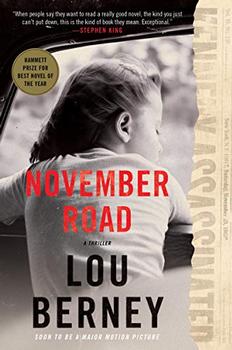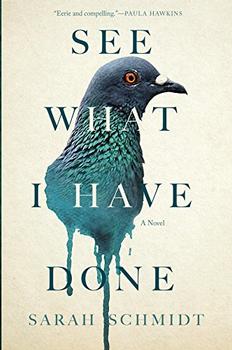Summary | Excerpt | Reviews | Beyond the book | Read-Alikes | Genres & Themes | Author Bio

In The Convictions of John Delahunt, author Andrew Hughes takes us inside the mind of a 19th-century serial killer. As the story opens, twenty-year-old John Delahunt is awaiting execution for the murder of a nine-year-old Dublin boy, and is permitted paper and ink to write a last statement. Delahunt uses the opportunity to confess in detail to his offenses, describing his life in general and more specifically what led him to commit crimes.
Hughes bases the novel on a case he stumbled across while researching his previous book, Lives Less Ordinary, a nonfiction social history based on the lives of the inhabitants of Fitzwilliam Square, Dublin. He goes well beyond what is chronicled in the historical record, however, completely fleshing out every aspect of Delahunt's life and personality to create one of the most realistic characters I've encountered in literature in a long time. The author's detailed descriptions of the environment and day-to-day activities of his protagonist provide an authentic depiction of time and place that transports readers to Delahunt's world. Hughes' ability to paint a complete picture of every scene his narrator encounters is noteworthy and truly highlights his talent. Every page of the novel is packed with lush descriptions that draw readers in completely:
Nowlan's pub consisted of two large rooms connected by a single bar that ran the length of the wall. Labourers and dock workers sat on benches, where decades of grime had given every surface a polished black varnish…The back room was darker. Pipe smoke hung in the air and yellow tobacco stains covered the walls. With the last of my money I ordered a drink, and sat on a stool just inside the partition. My attention was caught by a child's porcelain doll that sat incongruously among the bottles and glasses behind the bar, on a shelf backed by a large mirror. I observed the other customers in the reflection. For the most part they hunched in groups at tables. One old man sat alone and warmed his fingers over a shivering candle. The gloom made it hard to distinguish features as I looked from face to race.
Also exceptionally impressive is the way in which Hughes conveys Delahunt's cold-blooded nature, contemplating each killing, conversing with his victims while all the time mentally debating his best course of action. I was astounded at the criminal's chilling logic, how his deeds make sense from his point of view. Even when he isn't considering murder, his thought processes come across as disturbingly callous. At one point, his wife, a budding author, tries to burn her manuscript out of frustration. He rescues the sheaf of papers, but only because he doesn't want them to burn all at once; they could provide fuel for some time. He allows his wife to believe he prizes her work, however, taking credit for caring when all the while truly calculating what would benefit him the most. It is a frightening picture – one of the many scenes where the narrator's inner thoughts illustrate his true character.
The book loses a little steam in the middle, but I think that has more to do with my expectations than with the novel itself; I kept waiting for more bloodshed, to be honest. Once I realized the plot wasn't necessarily about the murders – that it was more a portrait of life in 19th-century Dublin – I began to appreciate it more. This narrative shift may cause problems for readers who are solely interested in the serial-killer aspect of the book, but those who enjoy quality historical fiction should find no difficulty in getting though the brief slow spots. Readers are advised to keep in mind that the murders are fewer than one would expect and far between, with plenty of information about a common man's environment and experiences making up the majority of the narrative.
Regardless, The Confessions of John Delahunt is top-notch historical fiction, and those interested in reading about life in 19th-century Dublin can't go wrong with this novel. Its detailed descriptions and unforgettable narrator make this a must-read for those who enjoy the genre.
![]() This review was originally published in The BookBrowse Review in July 2015, and has been updated for the
May 2016 edition.
Click here to go to this issue.
This review was originally published in The BookBrowse Review in July 2015, and has been updated for the
May 2016 edition.
Click here to go to this issue.

If you liked The Convictions of John Delahunt, try these:

by Lou Berney
Published 2019
Set against the assassination of JFK, a poignant and evocative crime novel that centers on a desperate cat-and-mouse chase across 1960s America - a story of unexpected connections, daring possibilities, and the hope of second chances.

by Sarah Schmidt
Published 2018
In this riveting debut novel, See What I Have Done, Sarah Schmidt recasts one of the most fascinating murder cases of all time into an intimate story of a volatile household and a family devoid of love.
Your guide toexceptional books
BookBrowse seeks out and recommends the best in contemporary fiction and nonfiction—books that not only engage and entertain but also deepen our understanding of ourselves and the world around us.